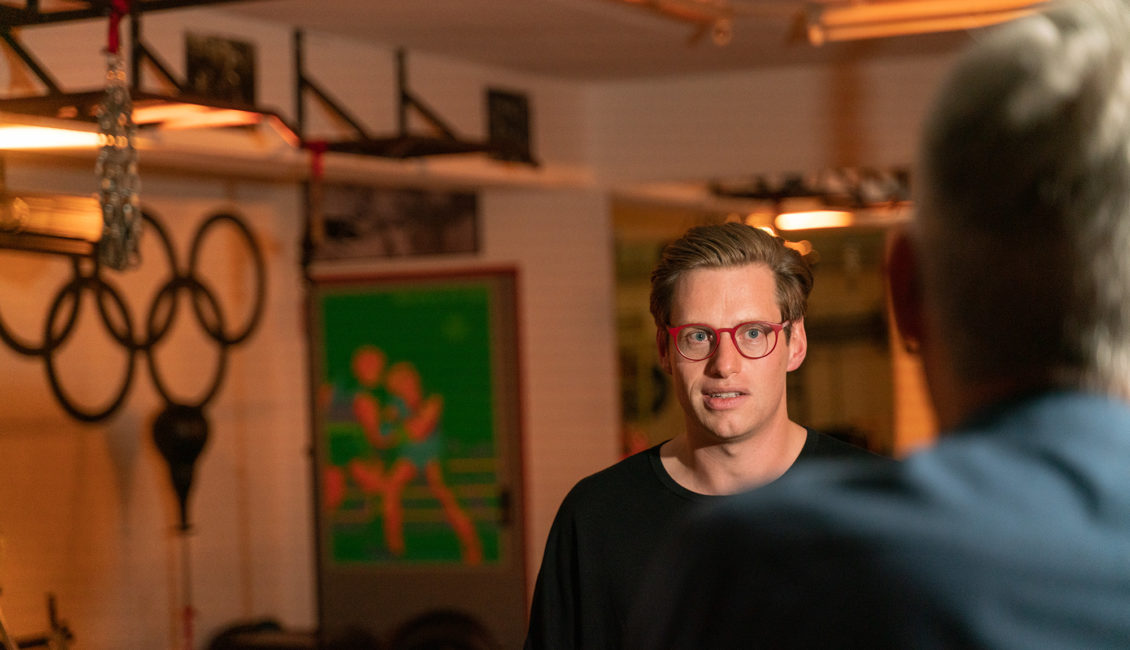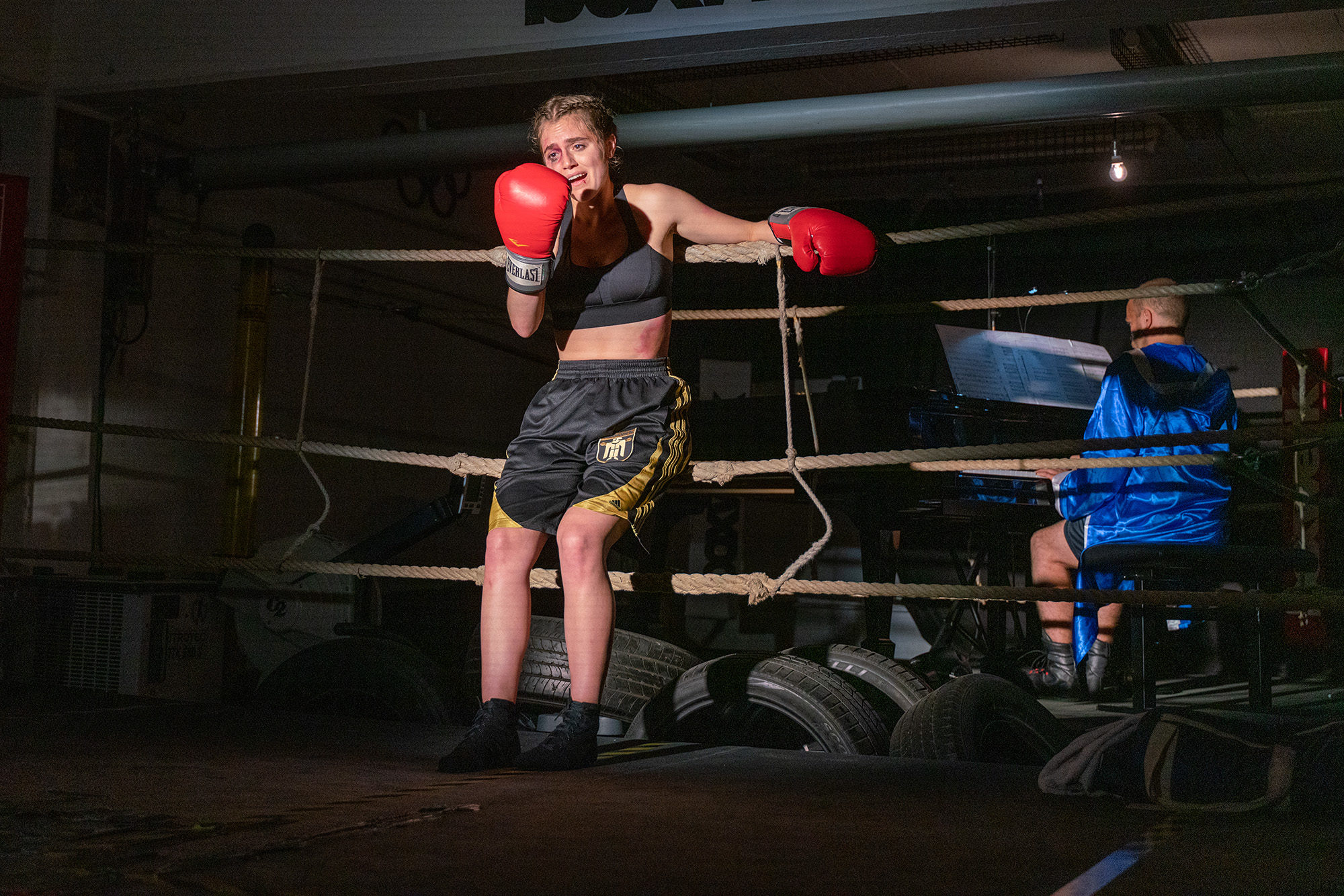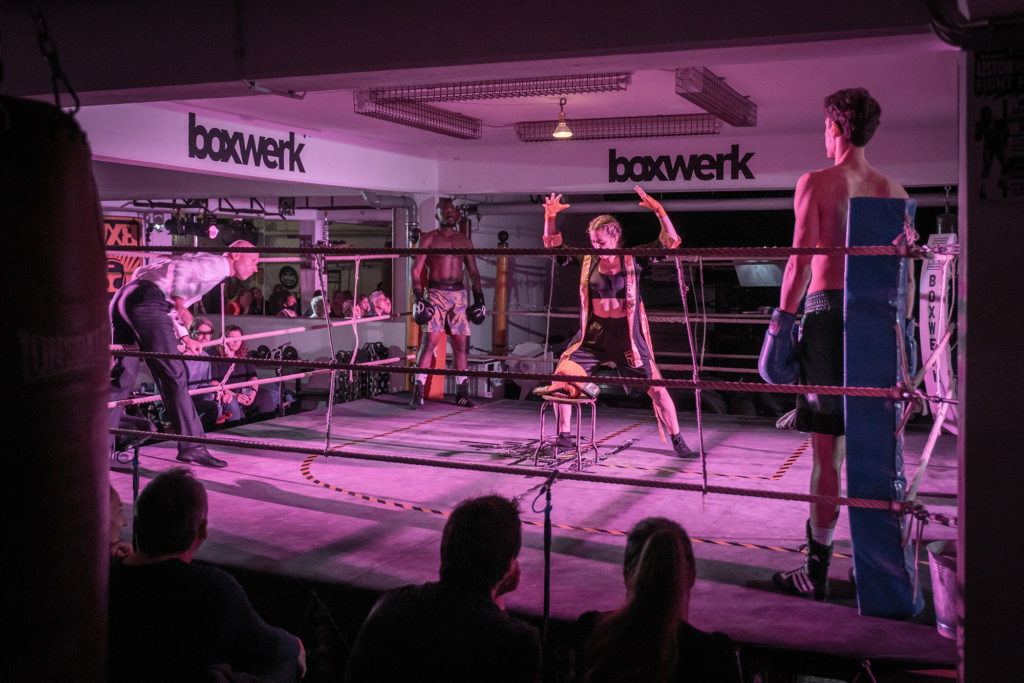
“The boxing match brings something raw to the production”
In the song production
HIDALGO BOX-SALON
a soprano cries, rages and sings her way through the five stages of grief. An inner battle that culminates in raw blows from boxing athletes – and fits on any stage thanks to its compact form, as director
TOM WILMERSDÖRFFER
explains in an interview
Text:
Philipp Nowotny
– Photo:
Max Ott
HIDALGO: Tom, in a nutshell, what is the BOX SALON?
Tom Wilmersdörffer: We tell the story of boxer Jenny. She has lost the battle of her life and is now fighting her way back to life through the five stages of grief. The piece is very minimalist. A one-woman show.
The singer is accompanied by a pianist.
Exactly, the pianist appears as the opponent: The piece begins with him being declared the winner and the singer lying beaten on the floor. While she begins an inner battle with herself, the pianist climbs into a second ring and remains there all the time as a kind of memory, a nagging something in the background. Until the singer finds peace at the end of the evening and the pianist and his accompaniment disappear.

How are the roles cast?
In the first performance
Andromahi Raptis
played “Boxerin Jenny” – a Canadian soprano who is currently a member of the ensemble at the Staatstheater Nürnberg. She is
a fantastic singer
but also embodies this tough, sporty role very credibly. She was accompanied by
Jonathan Ware
who also acted on stage, which is rather unusual for a pianist. We are also currently building up an understudy to be able to offer the program more flexibly.
The mourning phases on which the dramaturgy is based come from end-of-life care, right?
Exactly, a person who has received a fatal diagnosis goes through these universal phases. He sinks into depression, then doesn’t want to admit it and finally starts to negotiate: I’ll smoke less, then maybe it will work. Or he becomes spiritual and turns to a deity. And gets angry at his fate or his family, who are allowed to live on. These phases are not only found in the face of death, but also in small things. Especially when you fail existentially, a part of yourself always dies.
There is a three-minute boxing match in the middle of the evening – how important is it for the production?
It is very central. A real sparring match in which
real boxers
who actually punch while the pianist improvises. This creates a very special, spooky atmosphere.

What is the function of the fight scene?
The boxer is currently in the grieving phase of negotiating. In a way, she appeals to metaphysical powers: she conjures up her boxing gloves, dances like a madwoman through the boxing ring – and we enter a kind of dream world with her. The fight is part of her process, but at the same time a very immediate experience for the audience, powerful and direct.
Why do real boxers fight each other?
Because it’s much more intense than if extras were playing an exhibition match. This creates a break – and as a result, a piece of reality, something raw and unfiltered, protrudes into the production. During the production process, we were very concerned about whether this could work. But I think we succeeded well in integrating the fight into the story.

How much freedom does the singer have on stage? Or is the production planned down to the last detail.
Rather the latter, the plot is already very well thought out, including the timing, which has to happen in close coordination with the light. However, we worked closely together in the run-up to the project and Andromahi Raptis was very involved. Because of corona, we had to do a lot of preparatory work via video meetings.
At the premiere, the audience sat around the stage, i.e. the boxing ring. What is the difference?
This has advantages and disadvantages. For me as a director, that meant thinking about all sides, i.e. playing in all directions. Every viewer will get to see the singer’s back at some point, but there is also a much greater closeness. The setting feels even more realistic overall. It has something of Shakespeare’s Globe Theater in London with its arena seating.
In which genre do you classify the evening?
Ultimately, this is musical theater, with the special elements of art song and boxing. I would call it a “song production”. Unlike an opera, for example, it is not based on a prescribed libretto, but on songs by John Dowland and Kurt Weill, which our Musical Director
Johanna Malangré
has selected. We have knitted the story of boxer Jenny around these pieces.

Renaissance songs by Dowland meet 1920s chansons by Kurt Weill – what’s behind this selection?
What the pieces all have in common is that they deal with topics relating to failure. Even though they come from very different countries and times, they often deal with failure in a very similar way, sometimes ironically, sometimes very seriously. Our aim was to capture the constancy of the original theme of failure over the centuries. It’s also a nice development in terms of musical dramaturgy, because we play both composers in blocks one after the other. First Dowland, who is light, delicate and fragile, then Weill, who is very snotty and sometimes shouts.
But the song is originally a concertante form – isn’t there a danger that the quality will suffer if it is staged?
I think it always depends on what your goal is. In our production, the songs even take on an additional dimension. On the one hand, we have these many little stories that are told within the songs. For example, Weill’s “Surabaya Johnny”, which is about a woman who has been taken advantage of by a sailor, but who still loves him. On the surface, this story has nothing to do with the frame story of the defeated boxer, but it gives it a new intensity. The song stands for the moment in which the boxer comes to terms with her trainer, who has promised her the world. And now she sits in the corner and gives in to the anger that is also part of such a grieving process.
Would you advise a song purist not to visit?
If you want to experience a classical song recital where these songs are performed finely and purely and everything is told only through voice and expression, then this is perhaps not the place for you. We are much more interested in providing new impetus. We want to
to bring worlds together
that would never have been brought together before.
